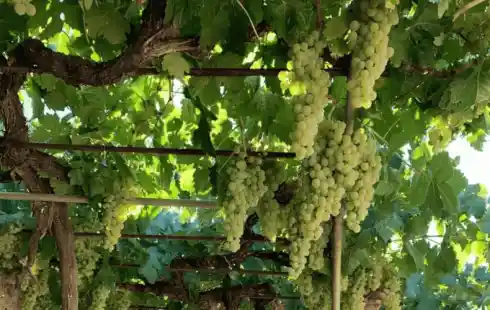
Revolutionising Websites for Cafés, Restaurants, and Bars Across Europe
Section: News
 Nestled in the heart of Tenerife, the villages of La Escalona and Vilaflor de Tenerife are renowned for their rich traditions in grape cultivation. Here, the art of grape growing has been passed down through generations, blending local knowledge with natural practices to produce some of the finest organic wines in the region.
Nestled in the heart of Tenerife, the villages of La Escalona and Vilaflor de Tenerife are renowned for their rich traditions in grape cultivation. Here, the art of grape growing has been passed down through generations, blending local knowledge with natural practices to produce some of the finest organic wines in the region.
The journey of a grapevine in Vilaflor begins in February, during the phase of the cuarto creciente (waxing crescent moon). Local farmers believe that pruning the vines during this lunar phase bestows the plants with increased resistance to plagues and diseases. This practice, steeped in tradition, is seen as the cornerstone of a healthy vineyard. The vines are carefully pruned, removing excess growth and shaping the plant for the growing season ahead.
After the pruning, the wait for the first leaves begins. This period is crucial as it signifies the vine's readiness to enter a new growth phase. Once the first leaves appear, farmers wait an additional week before starting a regular watering schedule. The vines are watered twice a week, ensuring they receive the right amount of moisture to support robust growth without becoming waterlogged.
About a month after the leaves emerge, the vines begin to flower. This stage is a precursor to grape formation and requires diligent care. As the tiny grapes start to develop, the farmers apply organic sulfur every 15 days. Known locally as "tierra de diatomeas," this natural insecticide helps protect the young grapes from pests without harming the environment.
In addition to pest control, nourishing the soil is a key aspect of grape cultivation in Vilaflor. Every 15 days, farmers enrich the roots with "humos de lombriz," a potent organic fertilizer derived from worm castings. This natural fertilizer provides essential nutrients, promoting healthy vine growth and improving soil structure.
The culmination of months of meticulous care and attention is the harvest, which takes place in September and December. During these months, the grapes are carefully picked at their peak ripeness, ensuring the best quality fruit for winemaking. The harvest is a time of celebration, as families and communities come together to gather the fruits of their labor.
After the harvest, many villagers in La Escalona and Vilaflor engage in the time-honored tradition of winemaking. Using organic methods, they transform the grapes into exquisite wines that reflect the unique terroir of Tenerife. The wine is made with minimal intervention, allowing the natural flavors and characteristics of the grapes to shine through.
The grape cultivation in La Escalona and Vilaflor de Tenerife is more than just an agricultural activity; it is a way of life. Rooted in tradition and sustained by a deep respect for nature, the practices of these villages produce grapes and wines of exceptional quality. The careful pruning during February's cuarto creciente, the regular watering, the use of organic insecticides and fertilizers, and the communal harvests all contribute to the rich tapestry of grape growing in this beautiful region.
Image by Joel

Section: News

Section: News

Section: News

Section: Arts

Section: News

Section: News

Section: News

Section: News

Section: News

Section: Health

Health Insurance in Germany is compulsory and sometimes complicated, not to mention expensive. As an expat, you are required to navigate this landscape within weeks of arriving, so check our FAQ on PKV. For our guide on resources and access to agents who can give you a competitive quote, try our PKV Cost comparison tool.

Germany is famous for its medical expertise and extensive number of hospitals and clinics. See this comprehensive directory of hospitals and clinics across the country, complete with links to their websites, addresses, contact info, and specializations/services.

Frisch mit dem Amadeus Austrian Music Award ausgezeichnet, meldet sich OSKA mit neuer Musik und neuen Tourdaten zurück. Ihr zweites Album ,,Refined Believer" erscheint am 20. Juni 2025 und zeigt sie persönlicher und facettenreicher denn je. Noch in diesem Jahr geht sie solo auf Tour, bevor sie...
No comments yet. Be the first to comment!